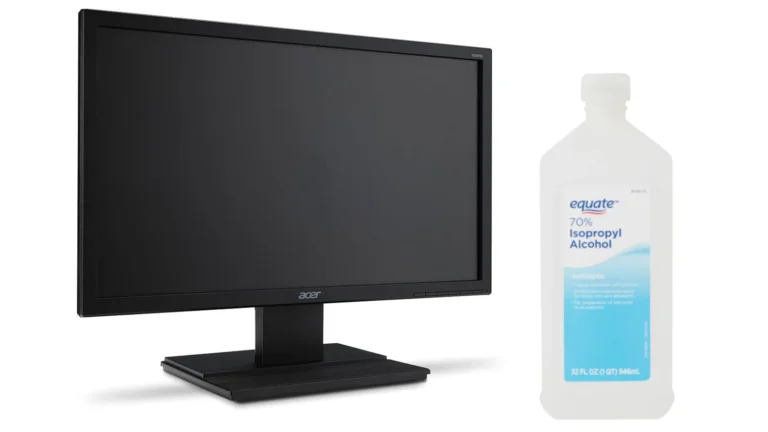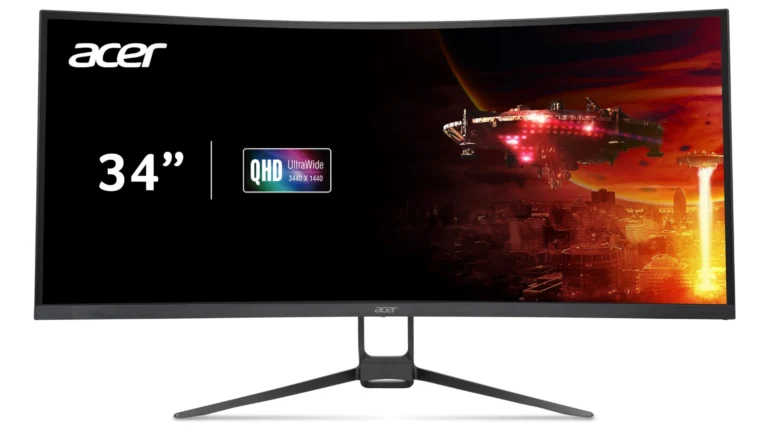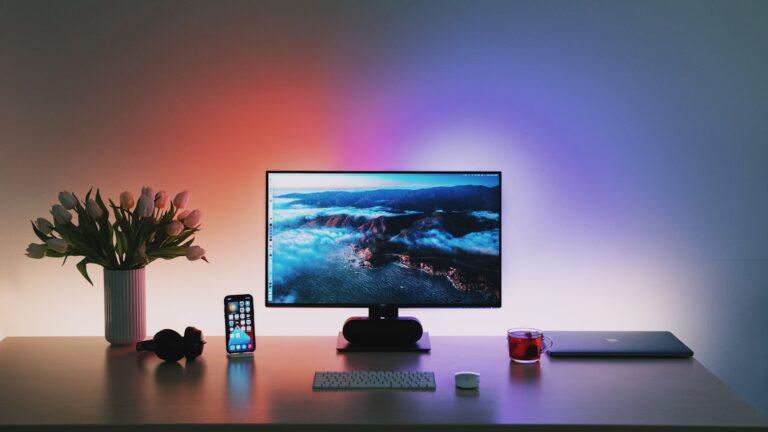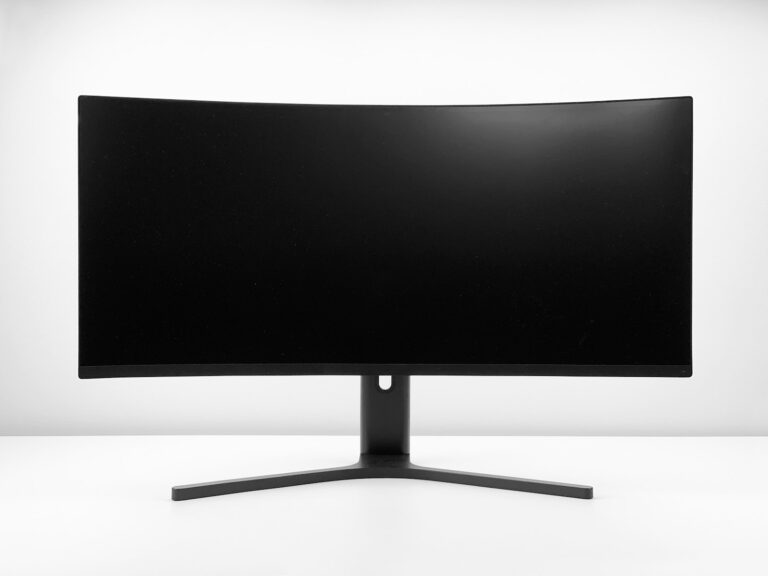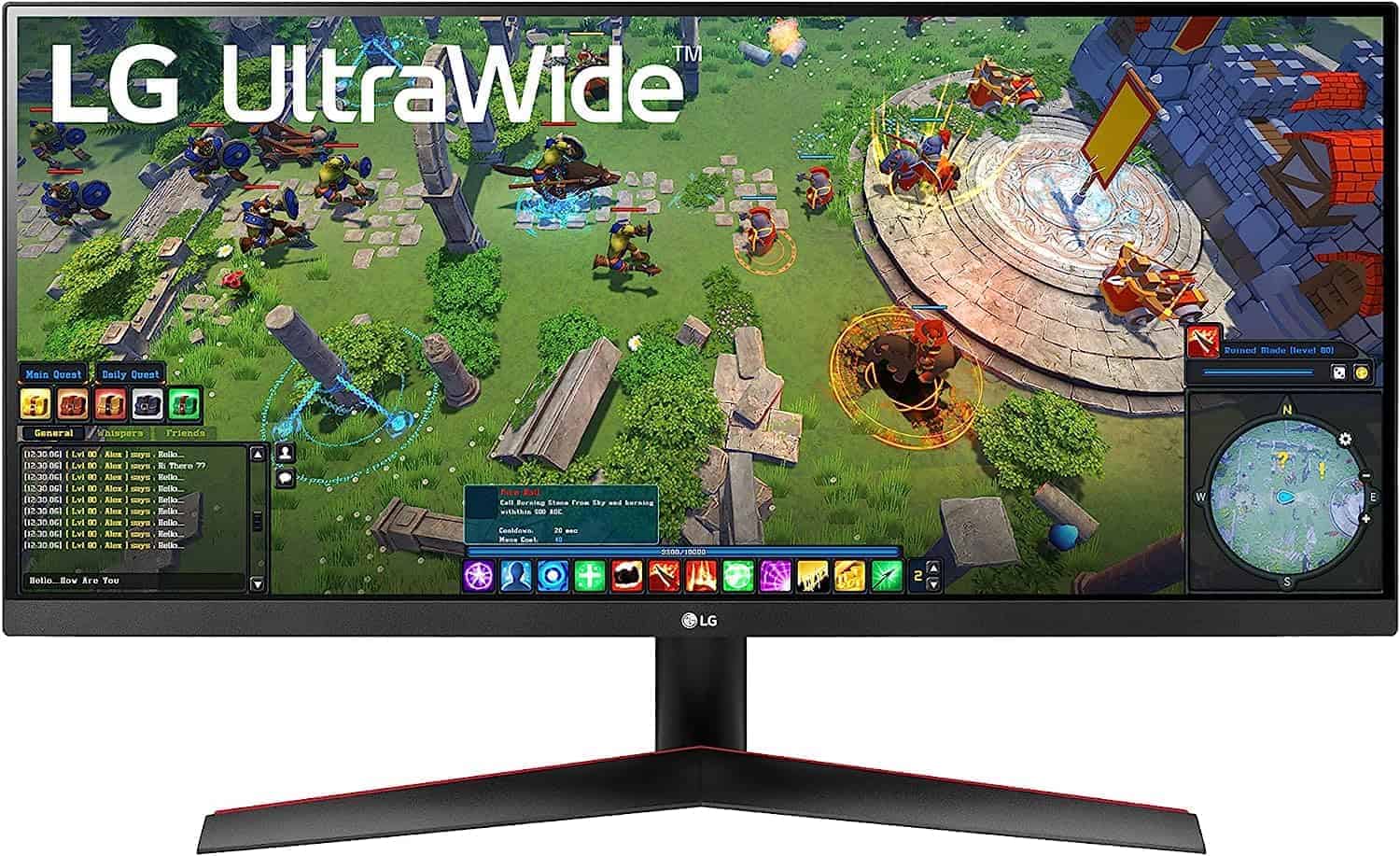
The 2560 x 1080 resolution is a popular choice for those looking for an ultrawide display experience. This resolution provides a wider field of view compared to standard 16:9 monitors due to its ultrawide 21:9 aspect ratio. It combines the height of a traditional 1080p screen with a much broader width, allowing for a more expansive display without compromising on vertical pixel count. These ultrawide monitors are ideal for both productivity tasks that benefit from additional screen real estate and an immersive gaming or media viewing experience.
The 2560 x 1080 resolution includes 2560 horizontal pixels and 1080 vertical pixels, providing a high level of detail and space for multitasking. The aspect ratio’s significance lies in its ability to present more content horizontally, which is especially useful in creative industries or for managing multiple applications side by side. Compatibility with this resolution will vary by the device and content being displayed; however, most modern hardware and software can support the ultrawide configuration, ensuring that this resolution remains a versatile choice for users.

Common Aspect Ratios and Resolutions
Here’s a table comparing Ultrawide 21:9 (2560 x 1080) Aspect Ratio to other common resolutions:
| Aspect Ratio | Resolution | Pixels | Pros | Cons |
|---|---|---|---|---|
| Ultrawide 21:9 | 2560 x 1080 | 2.7 MP | Increased horizontal space, great for multitasking and productivity, immersive gaming and movie experience. | Requires compatible monitor and content, can be expensive, may cause letterboxing or black bars with non-optimized content. |
| 16:9 | 1920 x 1080 (Full HD) | 2.1 MP | Most common, widely supported, good balance of image quality and performance. | Not as immersive as ultrawide, limited horizontal space for multitasking. |
| 16:9 | 2560 x 1440 (QHD) | 3.7 MP | Higher pixel density, sharper image, better for productivity and gaming. | Requires more powerful hardware, can be expensive. |
| 16:9 | 3840 x 2160 (4K UHD) | 8.3 MP | Extremely high resolution, incredibly sharp image, great for professional work and content creation. | Requires very powerful hardware, can be very expensive, may cause scaling issues with older software. |
| 16:9 | 7680 x 4320 (8K UHD) | 33.2 MP | The highest resolution currently available, future-proof, unmatched image quality. | Extremely expensive, requires top-of-the-line hardware, very limited content availability. |
| 16:10 | 1280 x 800 (WXGA) | 1.0 MP | Good for smaller laptops, lightweight, energy-efficient. | Lower resolution, limited image quality. |
| 16:10 | 1440 x 900 (WXGA+) | 1.3 MP | Slightly higher resolution than WXGA, still good for laptops. | Still limited image quality compared to higher resolutions. |
| 16:10 | 1920 x 1200 (WUXGA) | 2.3 MP | Higher resolution, good for productivity on laptops. | Less common than 16:9 resolutions, may cause compatibility issues. |
| 32:9 | 3840 x 1080 (Dual Full HD) | 4.1 MP | Double the horizontal space of Full HD, ultimate immersion for gaming and multitasking. | Extremely wide, requires specialized monitor, can be very expensive, may cause compatibility issues. |
| 32:10 | 5120 x 1440 (Dual QHD) | 7.4 MP | Combines the benefits of dual monitors with a single ultrawide display, high resolution and pixel density. | Extremely expensive, requires top-of-the-line hardware, very limited content availability. |
Please note: The pros and cons listed are general and may vary depending on individual needs and preferences. It’s always best to consider your specific use case and budget when choosing a monitor resolution.
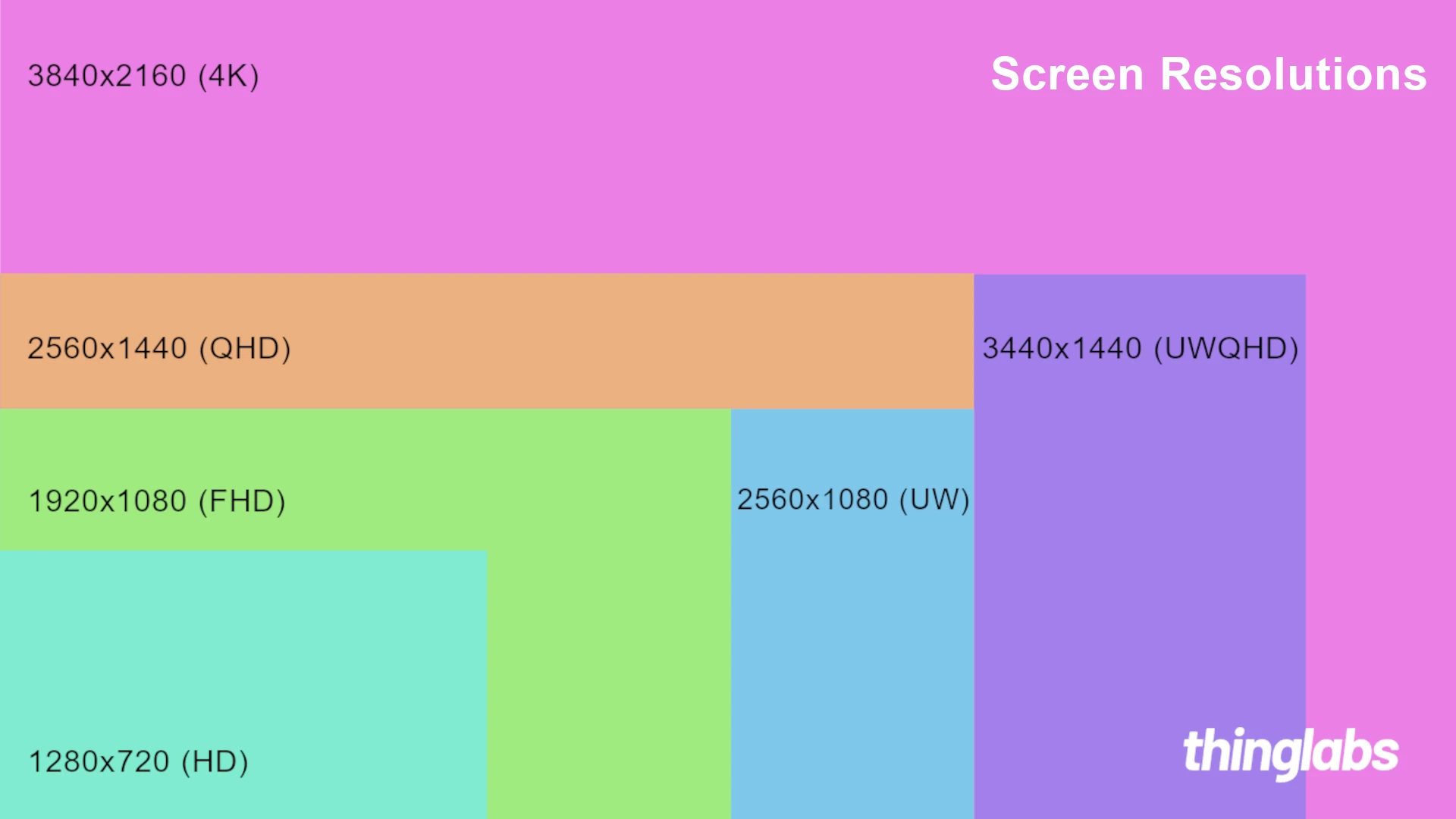
Understanding 2560×1080 Resolution
The world of display resolutions can be a confusing one, filled with numbers and acronyms. If you’ve come across the term “2560×1080” and are unsure what it means, you’re not alone. This resolution is specifically associated with ultrawide monitors, a type of display gaining popularity for its unique viewing experience.
What is 2560×1080 Resolution?
2560×1080 refers to the number of pixels that make up a display. In this case, there are 2560 pixels horizontally and 1080 pixels vertically. By comparison, a standard Full HD (1080p) monitor has a resolution of 1920×1080 pixels. The key difference lies in the horizontal width.
Ultrawide Aspect Ratio
The defining characteristic of a 2560×1080 display is its aspect ratio. Aspect ratio refers to the width of the screen compared to its height. A standard monitor has a 16:9 aspect ratio, while a 2560×1080 monitor boasts a wider 21:9 aspect ratio. This creates a more immersive viewing experience, particularly beneficial for gaming, multitasking, and watching certain movies.
Pros of 2560×1080 Resolution
Here’s a breakdown of the benefits of opting for a 2560×1080 resolution:
- Increased Screen Real Estate: Compared to a standard 16:9 monitor, the extra width provides more horizontal space for multitasking. You can view multiple windows side-by-side comfortably, improving productivity.
- Enhanced Gaming Experience: Many modern games support 21:9 aspect ratios, allowing you to see more of the in-game world and potentially gain a competitive edge.
- Cinematic Viewing: Certain movies are filmed in ultrawide formats. With a 2560×1080 monitor, you can watch these movies without black bars at the top and bottom, filling your entire field of view.
Cons of 2560×1080 Resolution
There are also some things to consider before investing in a 2560×1080 monitor:
- Lower Pixel Density: Compared to higher resolution ultrawide displays (like 3440×1440), 2560×1080 has a lower pixel density. This means individual pixels might be more visible, especially on larger screens. Text and images may appear slightly less sharp.
- Content Compatibility: Not all content is optimized for 21:9 aspect ratios. You might encounter black bars while watching some videos or playing certain games.
- Graphics Card Requirements: Running games at a smooth frame rate on a 2560×1080 resolution requires a more powerful graphics card compared to standard 1080p displays.
In Summary Table
| Feature | 2560×1080 Resolution |
|---|---|
| Horizontal Resolution | 2560 Pixels |
| Vertical Resolution | 1080 Pixels |
| Aspect Ratio | 21:9 |
| Advantages | Increased screen real estate, enhanced gaming experience, cinematic viewing |
| Disadvantages | Lower pixel density, content compatibility issues, graphics card requirements |
Key Takeaways
- Ultrawide 2560 x 1080 resolution offers a broader display for enhanced multitasking and immersion.
- It retains the vertical pixel count of 1080p while expanding horizontally to meet the 21:9 aspect ratio.
- Compatibility with modern devices and content is generally high, making it a practical choice for users.
Technical Specifications of 2560×1080 Resolution
This section delves into the specifics of 2560×1080 resolution, a popular display resolution for ultrawide monitors. It clarifies aspects such as aspect ratios, field of view, and pixel density.
Understanding 2560×1080
2560×1080 resolution is a display specification denoting a width of 2560 pixels and a height of 1080 pixels. It amounts to nearly 2.76 million total pixels on a screen. This resolution is prevalent in ultrawide monitors and caters to users who crave expansive screen real estate.
Aspect Ratio and Field of View
The aspect ratio for a 2560×1080 monitor is 21:9. This is a significant leap from the traditional 16:9 widescreen format. A 21:9 aspect ratio offers a broader field of view, beneficial for immersive gaming, productive multitasking, and film enthusiasts who enjoy cinematic displays without letterboxing.
Pixel Density and Sharpness
Pixel density, measured in pixels per inch (PPI), gauges the sharpness of a display. At 2560×1080, the PPI can vary based on screen size. Larger screens will have lower PPI and thus may appear less sharp, while smaller screens will have higher PPI, resulting in crisper images. The overall sharpness of the display also depends on viewer distance; closer viewing requires higher pixel density for sharpness.
Utilization and Compatibility
2560×1080 resolution is widely adopted for gaming and professional work because of its wide aspect ratio. This format caters to an enhanced field of view and allows for efficient multitasking due to the extra horizontal screen space.
Gaming and Productivity
Gaming: Many players prefer the ultrawide aspect ratio of 2560×1080, as it provides a more immersive experience. Games with support for 21:9 aspect ratios display more content on the horizontal axis, giving gamers a competitive edge by showing more of the game environment. Compatibility with this resolution depends on the game, so checking the supported resolutions and aspect ratios is key before purchase.
Productivity: For professional tasks, the additional screen real estate helps users manage multiple windows and applications side by side. It streamlines workflows and is beneficial for software developers, video editors, and digital artists who frequently multitask between tools and documents.
Multimedia and Entertainment
Ultrawide screens that boast 2560×1080 resolution deliver a cinematic experience close to the standard movie theater aspect ratio of 2.39:1. This makes watching films and video content more engaging as it reduces the letterboxing effect. However, not all content is produced for ultrawide screens, and watching standard 16:9 content may result in black bars on the sides of the screen.
Display Interfaces and Graphics Cards
Graphics Card: To run a 2560×1080 display, the user’s graphics card must support the resolution. Most modern graphics cards can handle this resolution without issues, but checking the specifications is recommended for assurance.
Display Interfaces: The common interfaces that transmit 2560×1080 resolution include HDMI and DisplayPort. It’s vital to ensure that the version of HDMI or DisplayPort is compatible with the monitor to achieve the desired resolution and refresh rates. For example, HDMI 1.4 or above and DisplayPort 1.2 or higher are capable of supporting 2560×1080 resolution at 60Hz.
Frequently Asked Questions
This section answers some common questions about 2560×1080 monitors, which offer a wider viewing area compared to the standard.
What are the advantages of a 2560×1080 monitor over a standard 1920×1080 monitor?
A 2560×1080 monitor provides more horizontal space. This extra space is great for multitasking, as it allows users to have more applications open side by side. This type of display is particularly useful for video editors and gamers who benefit from the wider field of view.
How does a 2560×1080 resolution compare to 2560×1440 in terms of screen real estate and pixel density?
The 2560×1080 resolution has fewer vertical pixels than the 2560×1440, but the same number of horizontal pixels. The lower vertical pixel count means less screen real estate and lower pixel density. However, it may still be preferred for certain uses, like watching films that match its aspect ratio or for gaming where the wider field of view can be more immersive.
Can 2560×1080 resolution be considered true 4K, and how does it differ from the standard 4K resolution?
2560×1080 is not 4K; it has fewer pixels. Standard 4K resolution is typically 3840×2160, which is significantly higher, offering more detail and sharpness for high-resolution content. They differ in both the aspect ratio and total pixel count.
What is the aspect ratio for a 2560×1080 display, and what are its implications for video content and gaming?
The aspect ratio of a 2560×1080 display is 21:9. This ultrawide format may show games and movies more immersively by filling the peripheral vision. But, if content is made for the standard 16:9 ratio, black bars may appear on the sides.
Is a 2560×1080 resolution the same as 2K, or are there differences between the two?
2560×1080 is sometimes categorized as 2K by the Digital Cinema initiative, but in the case of monitors, it’s an ultrawide full HD rather than true 2K, which usually refers to resolutions close to 2560×1440 in a 16:9 aspect ratio.
How can I resolve an issue where a 2560×1080 resolution is not available on my device?
First, check your graphics card and monitor capabilities to confirm they support 2560×1080. Then, update your graphics drivers. If the resolution still doesn’t appear, creating a custom resolution through your graphics card control panel might be necessary. Always refer to official sources or manufacturer guidelines for specific instructions related to your device.


